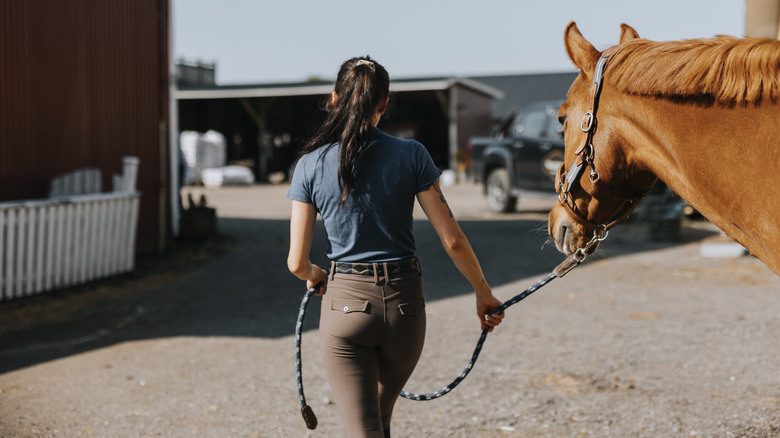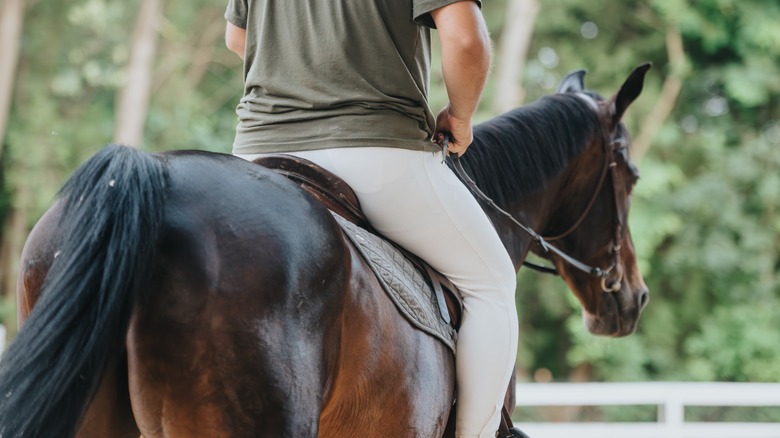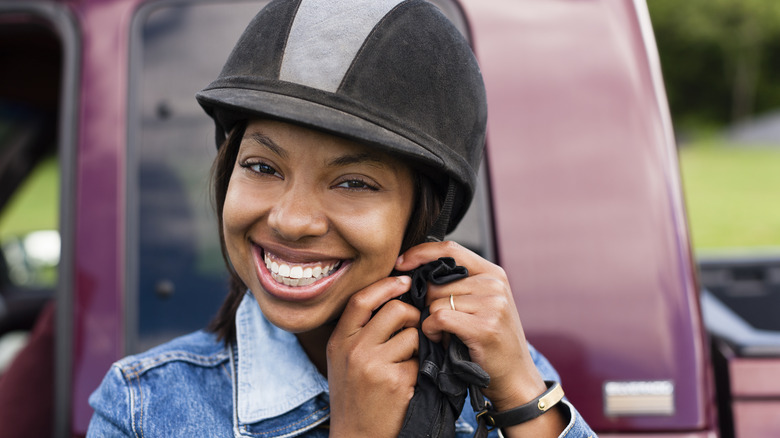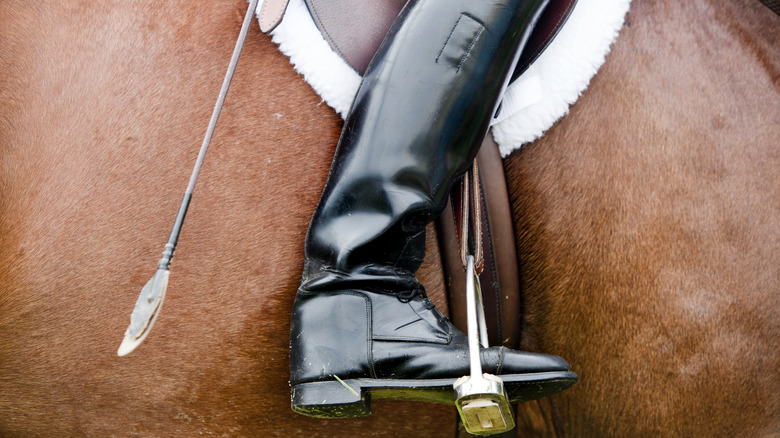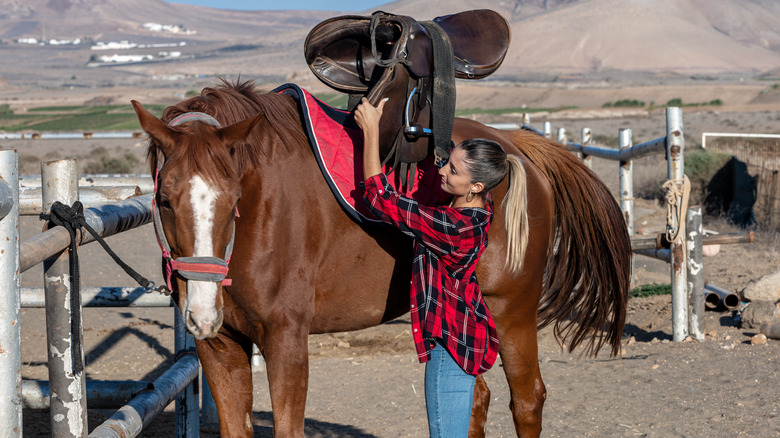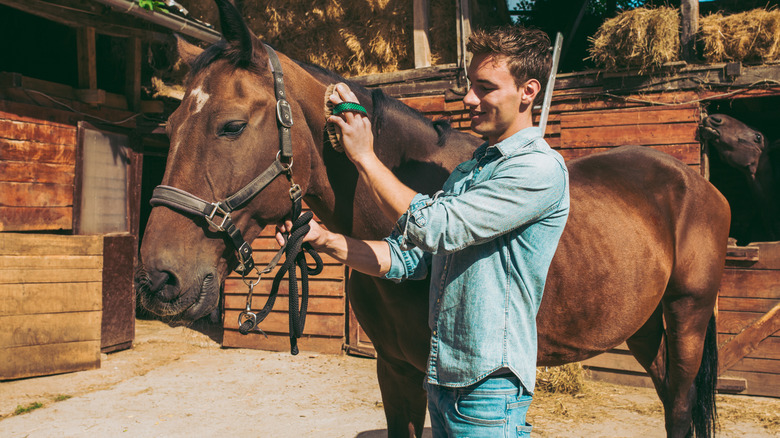The Basic Gear You Need To Start Horseback Riding
It may seem daunting to start horseback riding with the vast selection of gear available. While it's easy to be swayed by the many accessories, narrowing the list down to just the essentials ensures that you start strong without feeling overwhelmed. So, focus on the gear that combines the safety and comfort that's needed for effective riding. Each item on a beginner's checklist has a specific purpose, tailored to provide a safe and enjoyable experience in the saddle.
Many beginners find that picking up the sport is pricier than they expected due to the specialized nature of equestrian equipment. But beginning with a core set of items, rather than splurging on advanced gear, helps you settle into the sport affordably. Some equipment, like helmets and riding pants, offers essential safety features, while others, like saddles and bridles, allow for effective control and connection with the horse. Recognizing why each item is valuable gives you confidence as you acquire what's necessary. A pared-down list reduces the chance of buyer's regret and ensures that the essentials serve you well as you progress in your riding journey.
Choose the right riding pants for freedom and function
Riding pants, known as breeches or jodhpurs, are a staple for horseback riders due to their unique design. They provide freedom of movement while offering protection against chafing. Unlike everyday jeans, breeches fit snugly without seams on the inner leg, ensuring they don't irritate the skin during riding. They're also crafted from stretchy, breathable materials that allow for full range of motion, a necessity for anyone learning the ropes of horseback riding.
Another reason riding pants are indispensable is the added grip they offer. Many breeches come with reinforced knee patches or a grippy seat that keeps riders steady, especially during movements like trotting or cantering. As you progress, this added stability will make all the difference in maintaining control and connection with the horse. Jodhpurs, a slightly different design more popular with children, offer similar benefits but pair well with specific boots. Choosing quality riding pants might seem like a minor detail, but their functionality significantly impacts comfort and control on horseback, making them a wise investment for any beginner.
Don't skip the helmet
Safety is paramount in horseback riding, and a properly fitted helmet is an absolute must. Because horseback riding inherently carries some risk, a helmet designed specifically for equestrians should never be overlooked. Riding helmets differ from other sports helmets in their design, and are made to withstand the impact of potential falls from high up on the horse. High-quality riding helmets are equipped with technology to absorb shock, providing essential protection in a sport with a risk of serious injury.
Choosing the right helmet isn't just about protection. It should also fit snugly to ensure it stays in place. A loose or improperly sized helmet can shift during movement, reducing its effectiveness and causing discomfort. Styles vary, so whether you prefer a sleek look or added ventilation, you'll find options that balance protection with personal preference. Keep in mind that this is gear that you should never buy used, especially if you don't know the previous owner. Consider the investment in a new one a vital step in building your riding foundation, ensuring that every ride begins and ends as safely as possible.
Riding boots for stability and control in the stirrups
Proper riding boots are a staple for safe, effective horseback riding. Unlike some other boots, riding boots are equipped with a small heel designed to prevent your foot from sliding through the stirrup and offering stability in the saddle. They also have a reinforced toe box to shield and stabilize your feet. Designed in either long or short styles, riding boots vary based on rider preference and riding style. Tall boots offer protection for the calf, while shorter paddock boots paired with half chaps allow for more flexibility.
The material of riding boots is key. Most boots are made from leather or durable synthetics, designed to withstand daily wear and give you grip against the horse's sides. Investing in a reliable pair of riding boots will make it easier to develop good riding form and foot placement in the stirrups. Some features to weigh when narrowing down your options include the durability and care requirements of the material as well as how each style fits your feet and lower legs.
Saddle, bridle, and bit for horse and rider connection
Beyond rider apparel, having the right tack (the gear used on the horse itself) is essential to controlling the horse safely. A well-fitted saddle, bridle, and bit are three fundamental pieces of tack for any rider. Saddles come in different types, designed to fit both the horse's back and the rider's body. Choosing the right saddle takes careful measurement and consideration of both rider and horse to prevent discomfort and potential injury. This investment not only impacts your comfort but also the horse's freedom of movement and well-being.
The bridle and bit work in tandem as a communication system between rider and horse. The bridle holds the bit, which rests in the horse's mouth, allowing the rider to guide the horse with gentle rein movements. A properly fitted bridle ensures effective communication without discomfort for the horse, and different bit styles accommodate various skill levels and horse temperaments. Even as a beginner, learning to care for and use your tack helps you understand the basics of horsemanship and respect for the animal.
Grooming tools and a first-aid kit for horse care
Caring for your horse goes beyond riding, and grooming and health essentials are crucial to maintaining your horse's well-being. A basic grooming kit includes several types of brushes and tools designed for daily care. A curry comb loosens dirt and stimulates circulation, while a body brush smooths the coat and removes dust. Hoof picks clean out the hooves, essential for preventing painful stones or debris from causing injury. Regular grooming keeps your horse's coat healthy, but it's also a bonding activity that builds trust between rider and horse.
Alongside grooming, a first-aid kit is a must for addressing minor injuries or scrapes that happen during rides. Common items in an equine first-aid kit include antiseptic solution, bandages, and cooling gels to treat sore muscles or small abrasions. Being prepared with these essentials helps you respond quickly to minor health issues and shows your dedication to keeping your horse in top shape. A well-groomed, healthy horse is happier and performs better, making both your riding and the horse's experience more enjoyable and rewarding.
